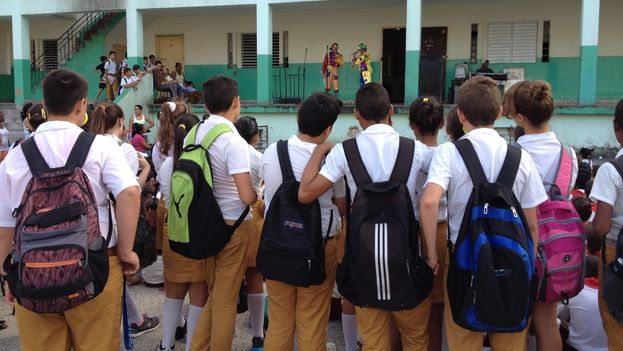
(Note from Translating Cuba: This article is being reprinted because of its relevance to an article in 14ymedio today.)
Yoani Sanchez, Generation Y, Havana, 13 September 2007 — My son has worn this week for the first time his mustard color uniform at a junior high school building of Giron-style prefabricated architecture barely five minutes from our Yugoslavian model building. The last days of vacation were marked by the process of buying the shoes, the search for a new backpack, and the discussions about how much to narrow the oversized size 18 pants.
The morning of the first day went by with passionate words and promises of a perfect course. Then, it came time for us to get familiar with the new model of junior high school, so different compared to the years when I went to one. For instance, for a while now, junior high school students can’t go home for lunch. The measure seeks to eradicate the contrasts between those who have a good lunch waiting for them and those who have less or almost nothing. It tries as well to prevent them from wandering the streets and committing crimes.
Under this new system, at noon each student receives a sandwich of some protein food and a glass of yogurt. At that age, such a small portion only serves to awake the fierce appetite and makes their stomachs rumble during the next class hours. So from twenty past twelve, the parents start to approach the school’s surrounding fence with little containers, jars and spoons, to reinforce their children’s diet. Some schools have banned the practice of bringing food to students, and other schools have announced that the students must bring their lunch to school with them in the morning.
Every day, in a quite stealthy way, I go near the school and pass through the fence the “shopping bag” with the necessary reinforcement. I notice many parents outside doing the same, but I also notice that a good share of the kids don’t get the additional ration. In the end, by trying to erase the differences, another one has been created, a difference so visible and sad that I wonder if it wouldn’t be better to be more flexible with the above mentioned measure and let the youngsters have their lunch at home, while guaranteeing decent food for those who stay at school.
Everything that is imposed, whatever is mandatory and rigid, ends up being undermined, weakened and, worst yet, rejected.
